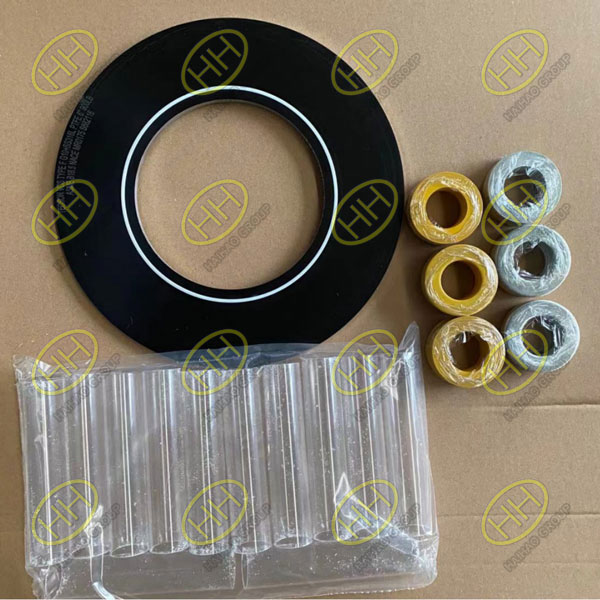Understanding the sealing principles of flanges
Flanges play a crucial role in ensuring the integrity and functionality of piping systems. At Haihao Group, we specialize in understanding the intricate sealing principles of flanges to deliver superior solutions to our clients.
Sealing Mechanism
The sealing mechanism of flanges relies on the application of preload force through bolts, generating sufficient pressure between the gasket and the flange sealing surface. This pressure allows the gasket to deform adequately, filling the microscopic irregularities on the flange sealing surface to achieve a tight seal.
The minimum unit pressure applied to the gasket to achieve this purpose is known as the gasket stress. When the pipeline connected to the flange reaches operational pressure, the axial force of internal pressure tends to separate the flanges, leading to bolt elongation and a reduction in the applied compressive force on the gasket. However, even when the compressive force on the effective gasket area decreases to a critical value, the seal can still be maintained. This remaining compressive force on the gasket is termed as the effective sealing force.
During the initial sealing stage, the plastic deformation of the gasket surface plays a decisive role in filling the micro-irregularities on the flange sealing surface. In operational conditions, the elastic recovery of the gasket dominates the sealing of the flange. Leakage in flange seals primarily occurs between the sealing surfaces of the flanges, with the possibility of leakage due to capillary action of the gasket being minimal. External factors can disrupt the seal, leading to leakage.
Factors Influencing Sealing
Operational Conditions: Parameters such as pressure, temperature, and the physical properties of the medium can significantly impact flange leakage. In industries like petrochemicals, where low-pressure flanges are common, the combined effect of pressure and temperature is critical, especially during temperature fluctuations.
Design Parameters: The coefficients of the gasket and the compression ratio are key design parameters. However, determining these coefficients involves various factors such as gasket width, preload pressure, medium properties, flange sealing surface width, and roughness. Currently, there is no authoritative standard for selecting these coefficients.
Bolt Preload Force: Increasing bolt preload force enhances gasket sealing performance. However, excessive bolt preload can lead to gasket loss of elasticity or even damage, compromising its ability to maintain sufficient elasticity under working conditions.
Gasket Properties: The deformation of gaskets includes both elastic and plastic deformation. Gasket material significantly affects its performance, thereby influencing flange sealing.
Flange Rigidity: Insufficient flange rigidity can cause excessive bending deformation, often leading to seal failure.
Sealing Surface: The shape and roughness of flange sealing surfaces should complement the gasket. The flatness of the sealing surface and its perpendicularity to the flange axis are crucial for ensuring uniform gasket compression. Consideration of thermal expansion-induced displacement or eccentricity during pipeline design and installation is necessary to prevent flange sealing failure and leakage.
Conclusion
At Haihao Group, we are well versed in the sealing principles and engineering technology of flange pipe fittings and provide customers with excellent solutions. Whether in the petrochemical industry, energy field or other industrial applications, we have won the trust and praise of our customers with our professional and reliable services.


